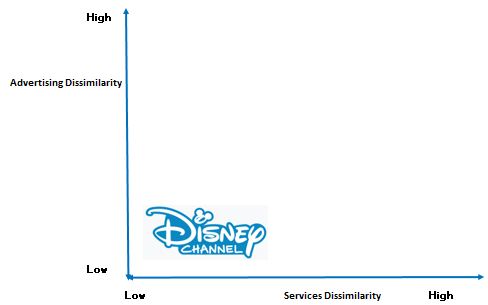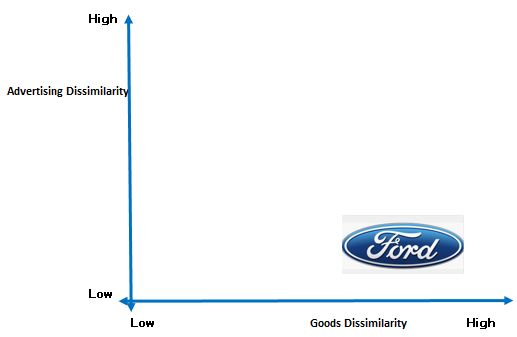Introduction
International Marketing Strategies of MNCs will be analysed in this report, such as standardization and adaptation, including marketing mix. Cateora et al., (2020) have stated in their research that international marketing refers to the set of marketing activities such as schedule, setting prices, and encouraging and guiding the movement of products and services of a company in the foreign market. International marketing brings higher profitability because companies become able to capture the foreign market and expand their business. Two approaches to international marketing are standardization and adaptation. In this report, the application of standardization and adaptation has been evaluated. Disney Channel, Ford, Nando’s and L’OREAL has been selected to show their standardization and adaptation approach. Different strategies of the companies, such as price, place, product and promotion, have also been evaluated in the report to show the effectiveness of the combination of marketing mix of the selected MNCs.
You may also feel interested to read below blogs:
Unique Selling Point of Toyota
Digital Marketing Strategies of Pret A Manger
Unique Selling Points of Nando’s
Standardization
Souchon et al., (2016) have revealed in their research that standardization indicates the marketing approach in which MNCs do not focus on bringing notable changes before they export their products to foreign countries. MNCs become capable of achieving economies of scale through conducting standardization approaches because they do not reproduce the products and services. They produce the same products and services in huge numbers and export them to the international market. The company do not need to make a new design of the products and services that also reduces costs. For instance, Disney is an American channel that telecasts entertainment programs such as cartoons, drama series, etcetera (Encyclopædia Britannica Inc, 2020). The channel telecasts the same programs in every country and does not change their programs but add English subtitle or dub the programs for some countries. It refers to the standardization approach because Disney does not reproduce their programs for countries. Lacking a standardization marketing approach companies miss a huge number of customers because they do not customize the services or products according to customers’ requirements.

Figure: Level of Disney Channel’s Standardization
From the above graph, it is seen that advertising dissimilarity and services dissimilarity is lower in Disney’s channel because it telecasts the same programs which refers to standardization.
Adaptation:
Yang (2018) has argued that the marketing approaches focus on customers’ demand and customize products and services on the basis of the demand of the customers of the foreign market is referred to as the adaptation approach. Adaptation marketing strategy assists companies in accomplishing the desired place within a targeted foreign market because customers get the products and services which meet their requirements. The MNCs conduct an adaptation strategy, produce services and products after finding out the requirement of international customers, and then export the products and services. As a result, customers become highly gratified toward the company, and the company become capable of creating an outstanding reputation in customers’ mind. For instance, Ford is an American multinational car company it produces S40 and S80, especially for the Chinese market to increase sales in the market and focusing on specific models for the Chinese market refers to the adaptation approach (The New York Times Company, 2020). It helps Ford to attract Chinese customers because the cars are made on the basis of the requirement of customers of the market. The disadvantage of the marketing strategy is it needs huge capital to customize products and services for each and every country according to the demand of their customers.

Figure: Level of Ford’s adaptation
Above stated graph shows that Ford uses a higher level of customization in producing cars for host countries, and I refer to the application of a higher adaptation approach.
Marketing Mix:
Schmid, Grosche and Mayrhofer (2016) have found in their research that marketing mix refers to the process of applying the marketing principles such as price, product, promotion and place and identifying the impact of the factors on business operations.

Figure: Marketing Mix (4Ps of Marketing)
Price: Sun, Paswan and Tieslau (2016) revealed that price refers to the amount of money which people pay to get products and services that meet their requirements of regular life. Companies set prices by following an adaptation pricing strategy and a standardized pricing strategy. Išoraitė (2016) stated that standardized pricing is the strategy in which companies do not consider any fact of the host country and fix the price as they want. For instance, L’OREAL is a company that do not consider any factors of the host country and fix the price according to their choice. Adaptation pricing is the strategy that encourages companies to consider the exchange rate, the income of customers, the financial stability of a country and other factors while fixing the price of their products and services. Adaptation prices ensure that customers of the host country will be capable of affording the products. For instance, Unilever produces mini packs of their detergent like Surf Excel, and people of lower income can purchase the detergent.
Product: The goods and amenities offered to customers in order to fulfil their demand is referred to as the product (Datta, Ailawadi and Van Heerde, 2017). The marketing strategy in which companies do not focus on customers’ needs while producing products and services is a standardized product. For instance, L’OREAL exports the same cosmetics they produce for local country’s customers. Abril and Rodriguez-Cánovas (2016) have found in their research that the strategies in which MNCs produce products according to customers’ needs are adaptation products. For instance, Nando’s signature product is peri-peri chicken, but it provides a vegan menu for vegetarian customers (Hello Magazine, 2019). Adaptation product needs huge investment, but it works more efficiently because customers get products and services of their choice.
Promotion: Wu (2018) revealed that promotion is the process of attracting customers toward a product or service to purchase. Standardized promotion means using the same promotion strategy for the international market (Išoraitė, 2016). For instance, L’OREAL telecasts the same advertisements in Bangladesh that they telecast for India. Adaptation promotion is designing promotion activities according to the culture of the host country. For instance, MC Donald’s makes different types advertisements for host countries using the language of the countries. Adaptation promotion is more effective because customers accept it more than standardized promotion.
Place: Pogorelova et al., (2016) has stated that place refers to the ways through which customers get the services and products of an organization. MNCs chose standardized or adaptation places according to the basis of their business objectives. They explore and observe the distribution strategy of the international market and then decide on the approach they will adopt. Most MNCs use resellers and other subsidiaries and a standardized approach does not work here. There are many MNCs that sell products directly by setting own outlets. For instance, Nando operates its outlet in Bangladesh through a franchisee (Linked in, 2020).
Recommendations for MNCs:
The adaptation marketing approach needs higher investment because MNCs have to re-design their products, promotion, and price strategy according to the host country’s culture and the demand of customers. Therefore, MNCs should choose standardization for international marketing in order to execute business at a lower cost and achieve economies of scale.
Conclusion:
The MNCs use the standardization approach become able to reduce production costs and re-designing costs because they export the same products and services to host countries. Whilst, the companies do not focus on higher costs and use an adaptation strategy because they want to capture a huge amount of customers in the host country’s market. Adaptation strategy is tough to process because MNCs may not be able to find out customers’ requirements. Therefore, standardization is an efficient approach to international marketing that MNCs should adopt.
References:
Encyclopædia Britannica Inc, 2020. Disney Company. Retrieved from: https://www.britannica.com/topic/Disney-Company/Live-action-films-and-later-decline [Assessed on: 07 June 2020]
Hello Magazine, 2019. The best vegan options available at your favourite chain restaurants. Retrieved from: https://www.hellomagazine.com/cuisine/2019011866773/best-vegan-options-available-high-street-restaurants/ [Assessed on: 07 June 2020]
Linked in, 2020. Nando’s Bangladesh. Retrieved from: https://bd.linkedin.com/in/nando-s-bangladesh-66338543 [Assessed on: 07 June 2020]
The New York Times Company, 2020. Ford Shifts and Gains Ground in Asia. Retrieved from: https://www.nytimes.com/2010/03/31/business/global/31ford.html [Assessed on: 07 June 2020]
